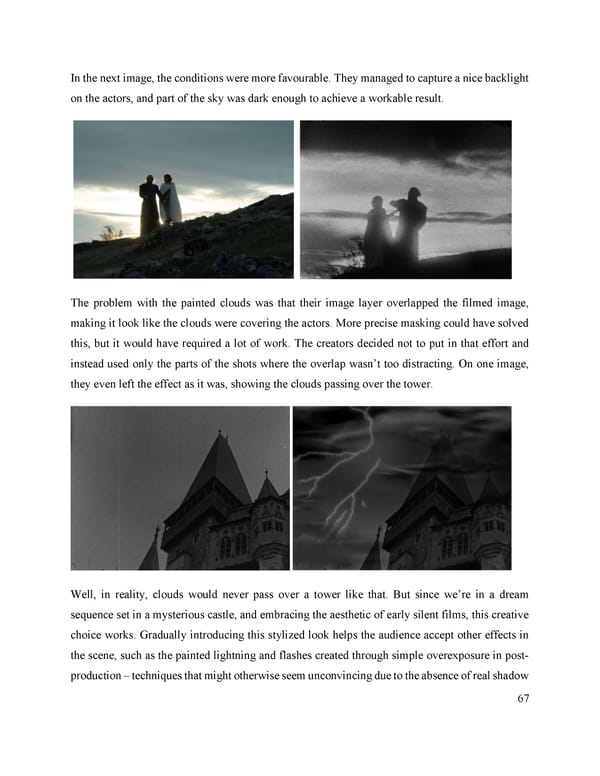In the next image, the conditions were more favourable. They managed to capture a nice backlight on the actors, and part of the sky was dark enough to achieve a workable result. The problem with the painted clouds was that their image layer overlapped the filmed image, making it look like the clouds were covering the actors. More precise masking could have solved this, but it would have required a lot of work. The creators decided not to put in that effort and instead used only the parts of the shots where the overlap wasn’t too distracting. On one image, they even left the effect as it was, showing the clouds passing over the tower. Well, in reality, clouds would never pass over a tower like that. But since we’re in a dream sequence set in a mysterious castle, and embracing the aesthetic of early silent films, this creative choice works. Gradually introducing this stylized look helps the audience accept other effects in the scene, such as the painted lightning and flashes created through simple overexposure in post- production – techniques that might otherwise seem unconvincing due to the absence of real shadow 67
 Lost Analogue: Exploring Film, Music, and Interdisciplinary Methods in Education Page 67 Page 69
Lost Analogue: Exploring Film, Music, and Interdisciplinary Methods in Education Page 67 Page 69